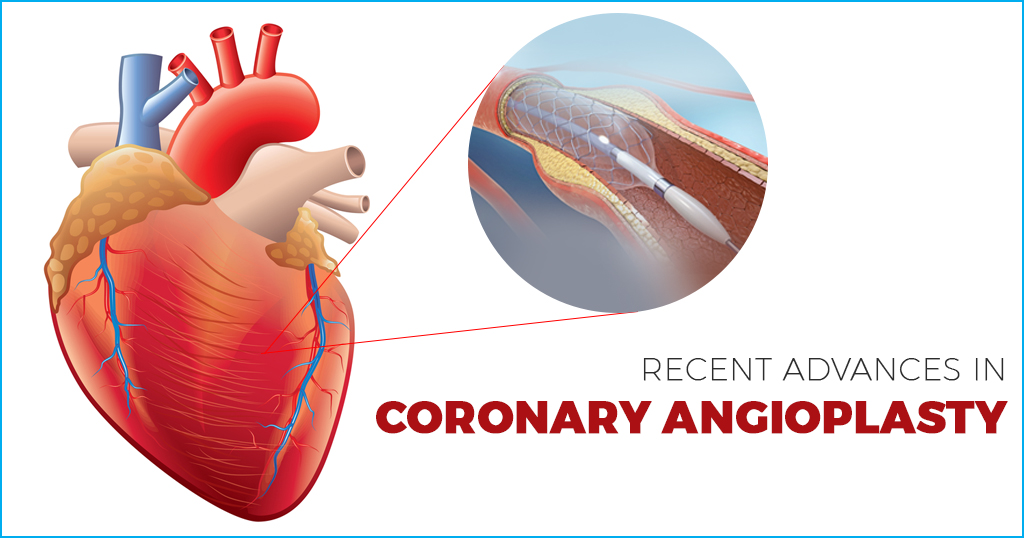Overview
The field of Interventional Cardiology has been one of rapid innovation and path-breaking advances. Coronary Angioplasty, also called PCI or PTCA is a noninvasive procedure that helps treat Coronary heart disease, by improving the blood supply to the heart muscle, by the widening and opening of the narrowed or blocked coronary arteries. It is used to stop heart attacks in progress, treat chest pain and restore blood flow through the coronary arteries, which supply blood to the heart.
Imaging the Coronary arteries
An Angiogram is performed prior to an Angioplasty. This is an X-ray image of blood vessels after they are filled with contrast material and is used to identify the exact location and severity of blocks. Intravascular imaging techniques like the Intravascular Ultrasound (IVUS), Optical Coherence Tomography (OCT) have revolutionized the precision of Angioplasty. These new technologies give crucial information of whether the plaque blocking the vessel is hard or soft, consists of lipids or calcium, the size of stent needed, and also assess the post-stenting status of the vessel.
Fractional Flow Reserve (FFR) is yet another contemporary tool used to determine if a patient needs a stent, a bypass surgery or can be treated with just medicines.
The Coronary Angioplasty techniques are
- Balloon Angioplasty: A flexible thin tube known as a catheter is inserted into the artery and fed to the blockage’s site. A tiny balloon is opened at the end of the catheter to push aside the blockage, improving blood flow.
- Stenting: A stent is a small tube that works as a scaffold providing support inside the coronary artery. From the original stainless steel stents, we now have thinner cobalt chromium or platinum chromium stents, drug eluting stents that release clot busting medication and biodegradable polymer stents.
- The Bioresorbable Vascular Scaffold (BVS) is like a stent, but it slowly dissolves as soon as the blocked artery can function naturally again and can stay open on its own. Several dedicated stents are now available for use in complex blocks at the level of bifurcation of arteries (Nilepax, Tryton) etc. Special stents ‘Mguard’ is used for treating acute heart attacks.
A catheter is used to deliver the stent into the narrowed coronary artery. Recent advances in catheters include:
- The ClearWay™ RX – Rapid Exchange Therapeutic Perfusion Catheter that helps save a larger area of the heart muscle in heart attacks.
- The CrossBoss Catheter, the latest technology for the treatment of chronic and 100% blocked arteries.
The decision on surgery versus stenting depends on whether the patient has the single or multi-vessel disease, the nature and location of the block and presence of diabetes etc. There is a scientific score called the Syntax score that takes these factors into account. Angioplasty has shown many advancements and is sure to help a considerable number of patients with Coronary Artery Disease.


















